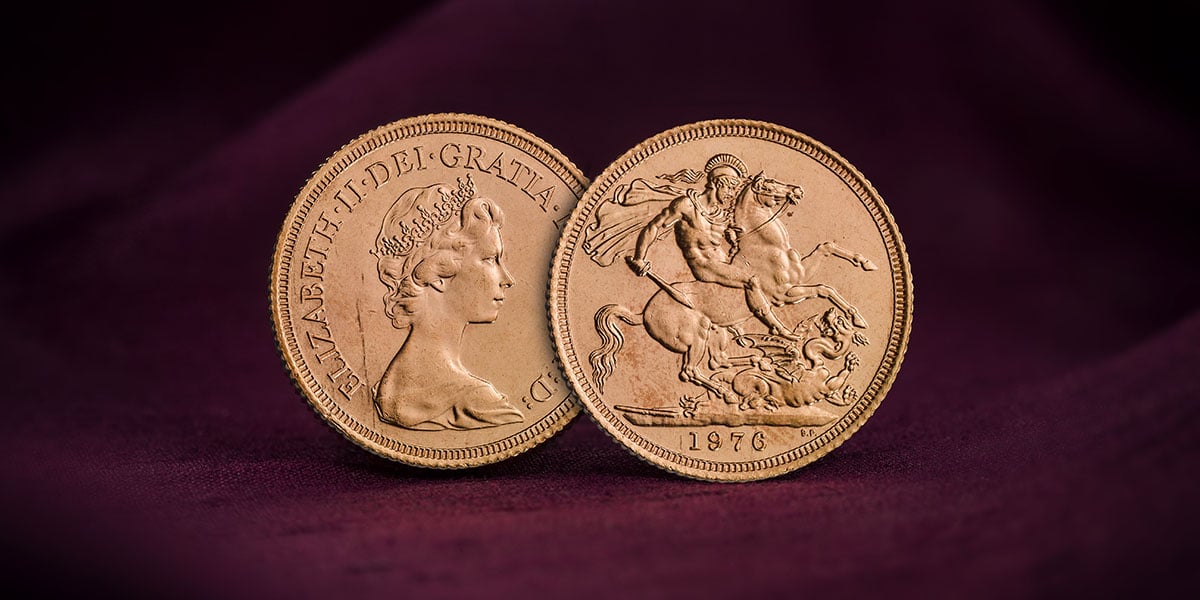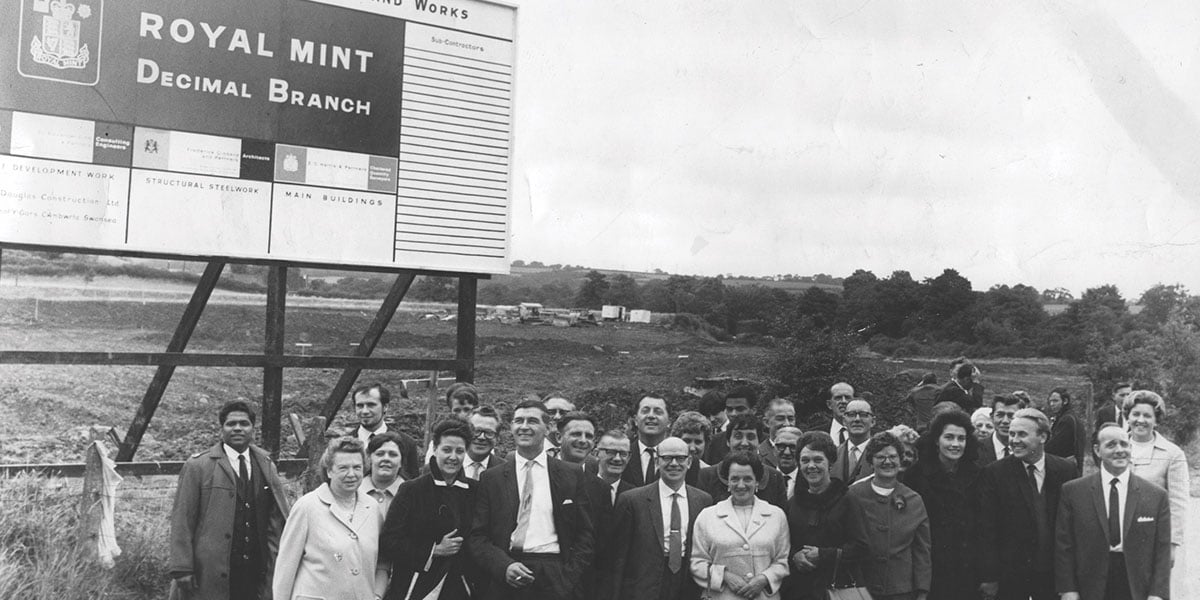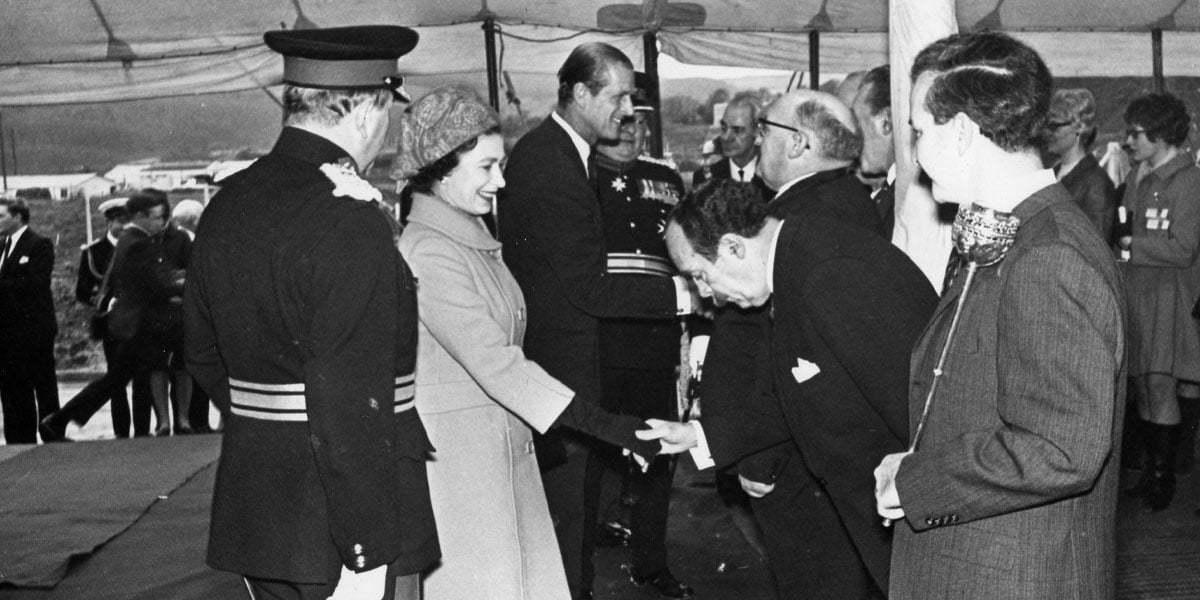In 1968, in response to the challenge of decimalisation, an advanced facility was established in Llantrisant, South Wales, to replace our existing production site at Tower Hill. Opened by Queen Elizabeth II in 1968, the transition to Wales was finalised in 1975. The last coin to be struck at Tower Hill, a gold Sovereign, was minted in November of that year, and the following year, production of the 1976 Sovereign began, making it the first to be produced in Wales.
Queen Elizabeth II acceded to the throne in 1952 upon the passing of her father, George VI. Her coronation took place the following year, officially marking the dawn of a second Elizabethan era that would last for more than seven decades. This edition of the coin bears the coinage portrait of Elizabeth II, designed by Arnold Machin, a portrait that was struck on British coins following decimalisation.

In 1961, the UK Government established a special committee to examine the possibility of transitioning to a decimal currency, which would be a huge endeavour. On 1 March 1966, the Chancellor of the Exchequer James Callaghan officially announced the implementation of the new system.
In the 1960s, The Royal Mint, situated at Tower Hill in London, had to deal with multiple challenges, such as insufficient space, an unproductive layout and outdated equipment. Even though there were some previous discussions about revamping the facility, the introduction of the decimal currency system in 1966 demanded extensive planning and coordination to produce millions of new coins. Due to Tower Hill’s limitations, it was concluded that a new location outside of London was necessary to accommodate the expansion needed for this ambitious undertaking.
A Mint in South Wales
In early 1967, more than 20 sites were assessed for The Royal Mint’s new location, with the list being narrowed down to seven potential sites. The site at Llantrisant in South Wales was ultimately chosen due to its proximity to London and the availability of a skilled workforce. Moreover, James Callaghan, who was also Master of the Mint and an MP for Cardiff South East, championed Llantrisant in Rhondda Cynon Taf as the new location.

The Royal Mint’s relocation to Llantrisant was officially announced in April 1967, and construction began in August. The new buildings erected in the Welsh countryside provided ample space and allowed for implementing modern production plants and techniques, which had not been possible for several decades.
Decimalisation was scheduled to take place in February 1971, so the new mint had to be set up quickly. James Callaghan laid the foundation stone in February 1968 and Queen Elizabeth II, accompanied by Prince Philip and The Prince of Wales, now His Majesty King Charles III, officially opened the site on 17 December.

After unveiling a plaque to commemorate the opening, the royal party were given a tour of the facility, and each of them minted six new decimal coins. Elizabeth II struck 1p coins, Prince Philip struck 1/2p coins, and The Prince of Wales struck 2p coins.
A Welsh Sovereign
The production of decimal 1/2p, 1p, and 2p coins commenced immediately, with Llantrisant manufacturing more than 1,400 million coins in its inaugural year of operation. Initially, Llantrisant relied on the supply of blanks from Tower Hill. However, in July 1971, the government approved an additional building programme to render the new mint entirely self-sufficient. Phase II concluded by the summer of 1975 as production at Tower Hill gradually ebbed.
In November of that year, the last coin to be struck at Tower Hill was a gold Sovereign. The following year marked a new beginning as the production of the 1976 Sovereign began in Wales, the first of many to come.
Specification
| Specification | Value |
|---|---|
| Denomination | Sovereign |
| Alloy | 22 Carat Gold |
| Weight | 7.98 g |
| Diameter | 22.05mm |
| Reverse Designer | Benedetto Pistrucci |
| Specification | Value |
|---|---|
| Obverse Designer | Arnold Machin |
| Quality | Circulating |
| Year | 1976 |
| Pure Metal Type | Gold |
